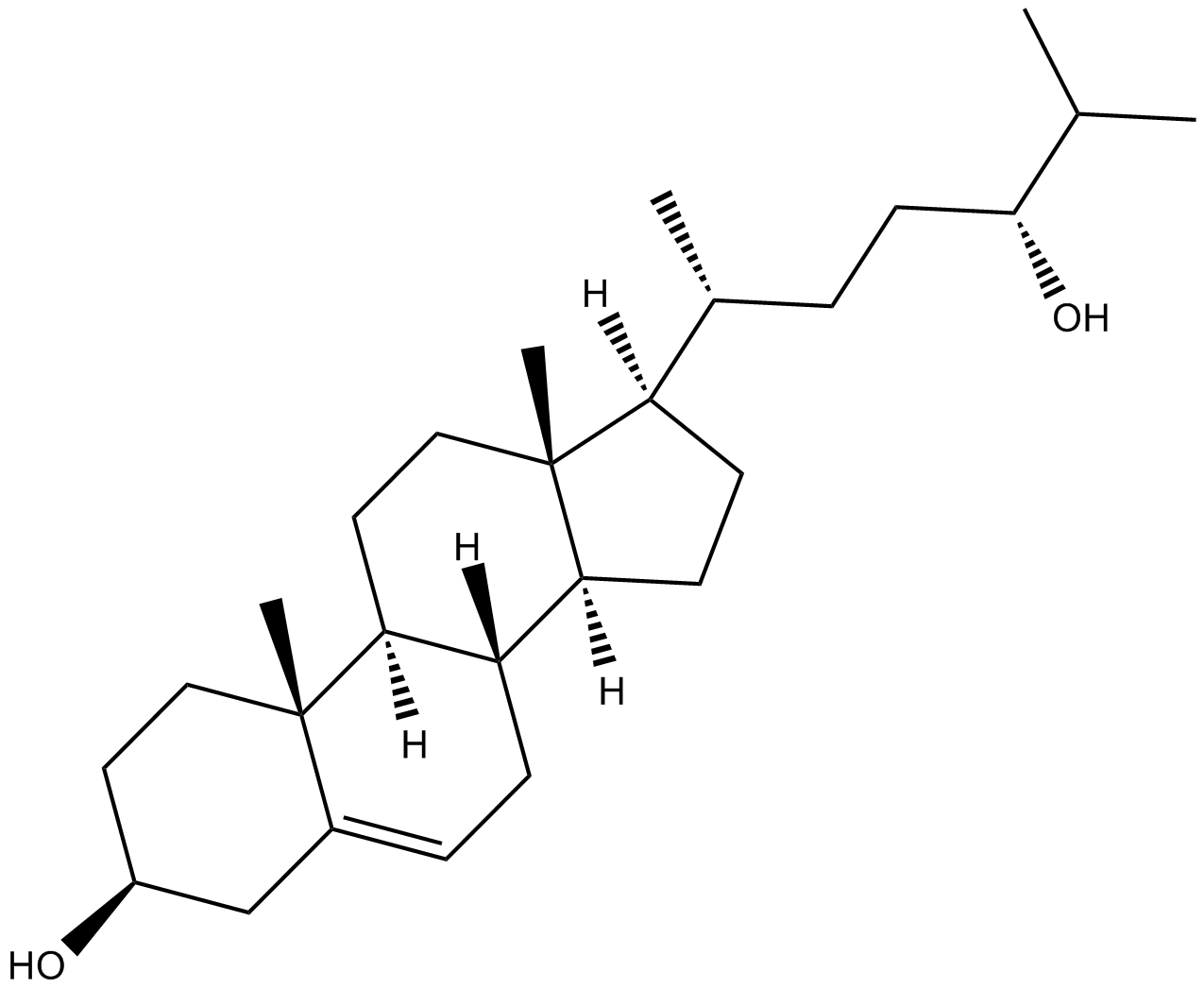24(R)-hydroxy Cholesterol (Synonyms: 24-Epicerebrosterol) |
| Catalog No.GC17827 |
LXRα and LXRβ nuclear receptors activator
Products are for research use only. Not for human use. We do not sell to patients.

Cas No.: 27460-26-0
Sample solution is provided at 25 µL, 10mM.
EC50: 7 and 4 μM for LXRα and LXRβ, respectively
24(R)-hydroxy Cholesterol is a LXRα and LXRβ nuclear receptors activator.
The liver X receptors (LXRs) are identified as orphan members of the nuclear receptor superfamily. Like other receptors in the family, LXRs heterodimerize with RXR and bind to specific response elements. LXRα and β are nuclear receptors regulating the metabolism of several important lipids, such as cholesterol and bile acids.
In vitro: In previous study, the authors proposed that LXRs could regulate the lipid metabolism via their interaction with specific oxysterols, such as 24(R)-hydroxycholesterol, 22(R)-hydroxycholesterol, 24(S)-hydroxycholesterol, and 24(S),25-epoxycholesterol. Results showed that by using a ligand binding assay, it was demonstrated that these oxysterols could directly bind to LXRs. In addition, this study further revealed that the position-specific monooxidation of the sterol side chain was required for LXR binding and activation. Enhanced binding and activation could be achieved via the use of 24-oxo ligands. Moreover, the introduction of an oxygen on the sterol B-ring led to a LXRa-subtype selectivity [1].
In vivo: Up to now, there is no animal in vivo data reported.
Clinical trial: So far, no clinical study has been conducted.
Reference:
[1] Janowski, B. A.,Grogan, M.J.,Jones, S.A., et al. Structural requirements of ligands for the oxysterol liver X receptors LXRα and LXRβ. Proceedings of the National Academy of Sciences of the United States of America 96(1), 266-271 (1999).
Average Rating: 5 (Based on Reviews and 16 reference(s) in Google Scholar.)
GLPBIO products are for RESEARCH USE ONLY. Please make sure your review or question is research based.
Required fields are marked with *




















